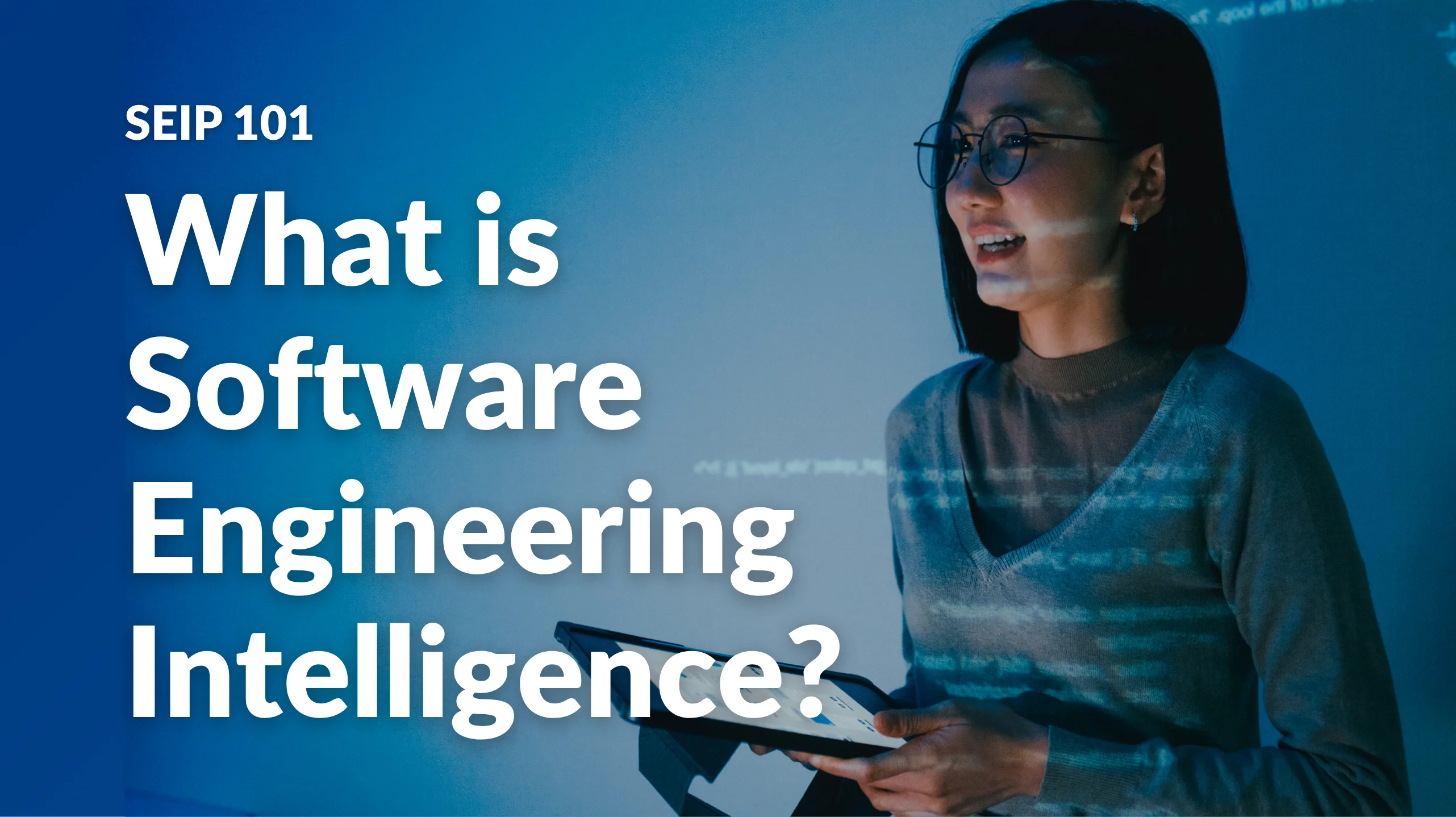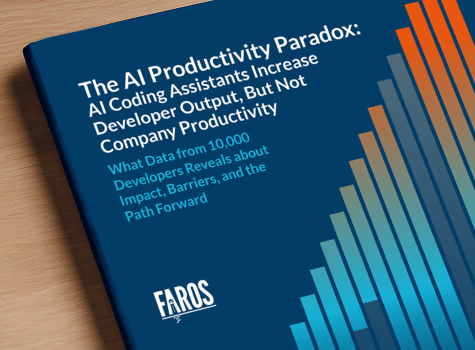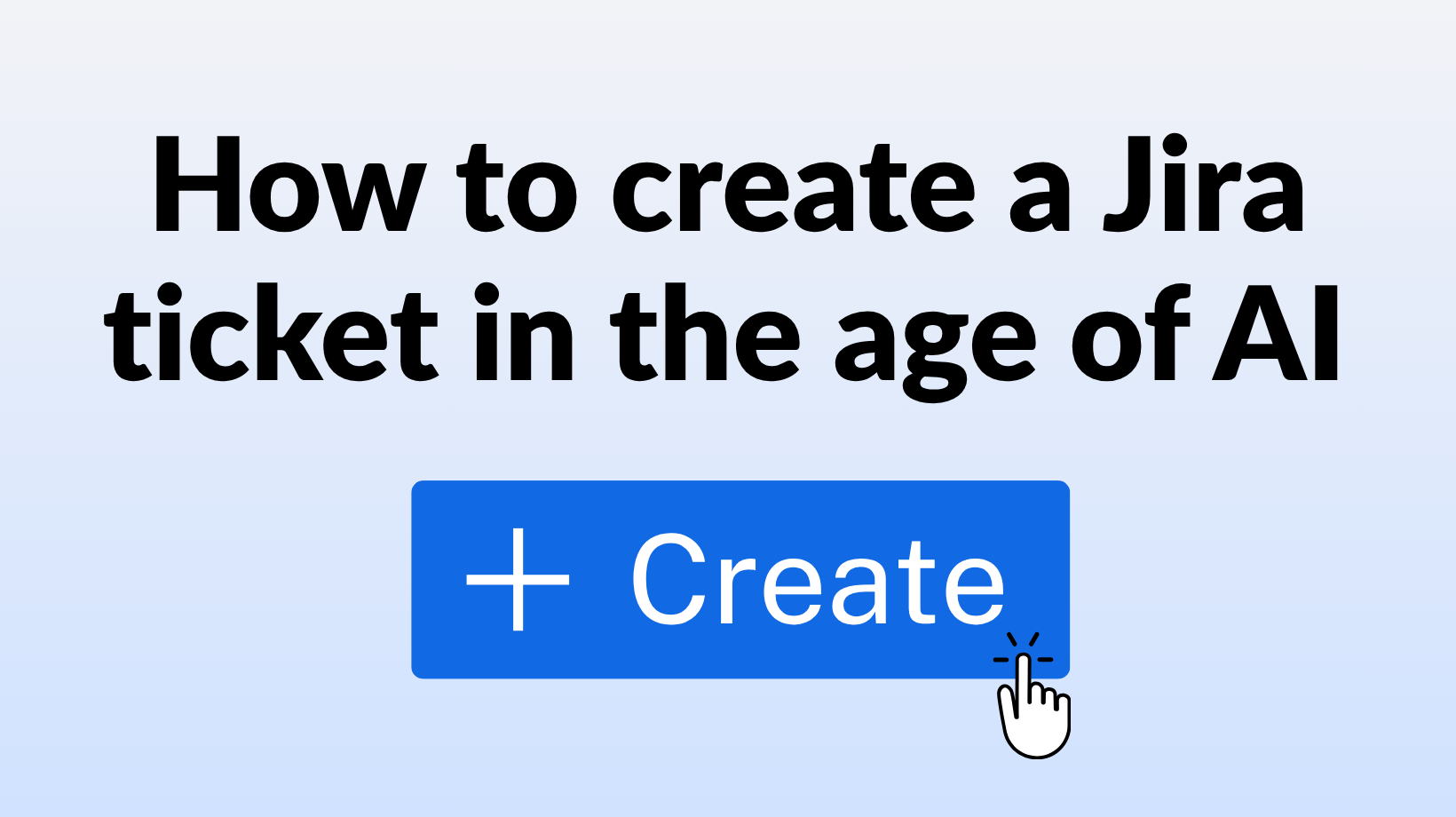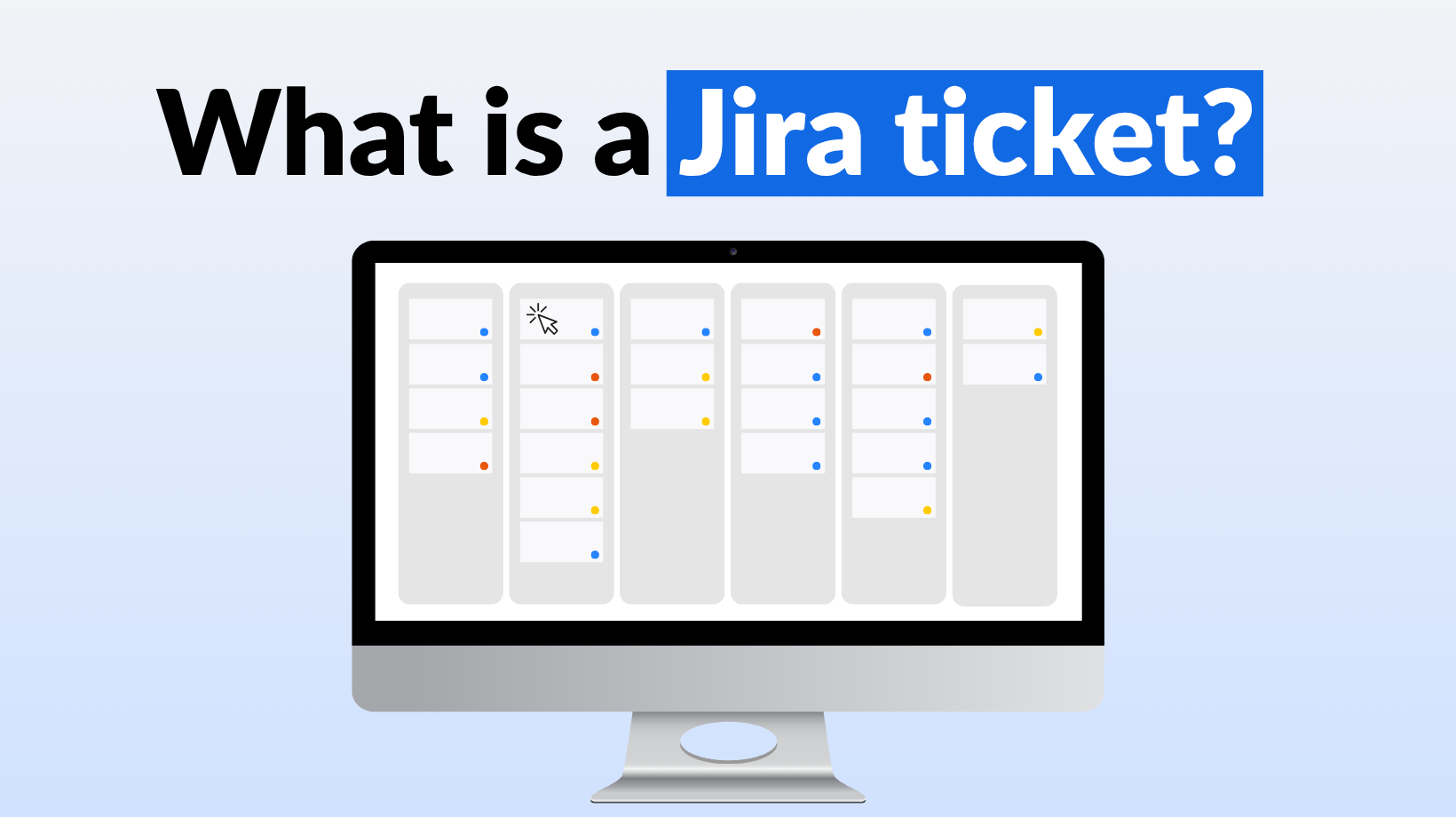TL;DR: Software engineering intelligence platforms analyze data from development tools and surveys to reveal where workflows and systems can be streamlined for greater efficiency and impact. They track key metrics around productivity, business alignment, software quality, and operational effectiveness—giving engineering leaders a single source of truth for smarter, data-driven decisions about resources, processes, and team health.
What exactly is software engineering intelligence?
Software engineering intelligence is the practice of collecting, analyzing, and visualizing data from across the entire software development lifecycle to understand engineering performance and productivity.
Software engineering leaders often struggle to achieve significant productivity insights through static reporting from standalone or siloed tools. To remove friction, improve collaboration, and accelerate delivery, engineering organizations need to see the complete picture and use data to inform decisions. Before making changes to people, processes, or technology, they need to experiment and measure impact.
What are software engineering intelligence platforms?
Software engineering intelligence platforms (recently redefined by Gartner as developer productivity insight platforms) provide real-time, data-driven visibility into how engineering teams work, spend time, and deliver against business goals. This visibility helps organizations optimize performance, improve delivery speed, and accelerate customer value. Gartner projects that by 2028, 60% of Fortune 500 companies will use these platforms, up from just 15% today.
Why are software engineering intelligence platforms gaining popularity now?
Software engineering intelligence platforms are gaining traction because modern engineering has outgrown traditional management methods. Distributed teams, complex systems, and remote work make it impossible for leaders to rely on intuition or hallway conversations for visibility.
The rise of AI coding assistants and autonomous agents has made this need even more urgent. DORA’s State of AI-assisted Software Development report shows that AI acts primarily as an amplifier and reinforces existing team patterns rather than fixing them. To get real value, teams need AI strategies that reflect their unique challenges and strengths, and software engineering intelligence platforms provide the visibility to guide those decisions.
At the same time, tighter budgets demand proof of engineering ROI. Executives want data on delivery speed, business alignment, and resource efficiency to justify investments, and these platforms turn engineering activity into measurable business outcomes.
“The visibility helps raise red flags and inform us if something is off in the way we are staffing the teams. We adjust our resources very quickly and efficiently based on those signals.”
— Vineeta Puranik, CTO at SmartBear
Finally, advances in analytics and integrations have made software engineering intelligence platforms more effective and trustworthy than ever. Modern solutions focus on team-level insights, benchmark against industry data, and embed seamlessly into existing workflows, making them genuinely useful rather than taxing and intrusive.
How do software engineering intelligence platforms actually work?
Software engineering intelligence platforms connect to your existing development tools through APIs and webhooks, linking systems like version control, task management, deployment pipelines, incident management and org charts. Once connected, they continuously ingest data from tickets, commits, pull requests, deployments, bugs, incidents, and project updates, normalizing it across systems to calculate key metrics like lead time, cycle time, deployment frequency, and change failure rate. Most platforms update these metrics in near real time.
Modern software engineering intelligence platforms help maintain a healthy delivery pace with workflow automations that alert teams in Slack or Teams when internal SLAs are breached, bottlenecks form, or metrics spike. They also provide AI-driven daily, weekly, and monthly summaries with key takeaways highlighted and recommendations on how to improve.
What metrics do software engineering intelligence platforms track?
All software engineering intelligence platforms track the four core DORA metrics: deployment frequency, lead time for changes, change failure rate, and time to restore service. These four metrics predict software delivery performance and organizational success based on years of research. Faros AI measures and tracks the fifth DORA metrics, rework rate, to allow companies to better pinpoint where instability is concentrated.
Beyond the DORA metrics, high-performing engineering organizations use their platforms to track additional metrics within the recurring cadences of the five pillars of engineering operations: Budgets, Talent, Productivity, Delivery, and Outcomes. The table below highlights a subset of these metrics. For a comprehensive list, refer to the Engineering Productivity Handbook.
| Pillar |
Sample Metrics |
| Productivity |
- Lead time and cycle times, throughput, deployment frequency
- Change failure rate, bug rates, incident rates, MTTR
- Code quality, code coverage, code smells, vulnerabilities
- Developer wait time (e.g., Git performance, build time, CI reliability, test flakiness)
|
| Delivery |
- Feature progress
- Resource allocation vs. targets
- Sprint metrics (e.g., say/do ratios, unplanned work percentage, backlog health, WIP)
|
| Outcomes |
- QoQ North Star metrics (adoption, usage, revenue, retention, security, reliability, developer satisfaction)
- Initiative progress vs. roadmap goals and risks
- Delivered work by investment category
- SLO and SLA compliance
|
| Budget |
- Engineering as a percentage of revenue
- Productivity per dollar spent per location
- Capitalized software development costs per period
- Vendor costs and ROI
|
| Talent |
- Team composition outliers vs. benchmarks (by level, by job profile)
- Attrition rate
- Onboarding effectivenes
- Productivity per location, vendor, contract type, employment type
|
Who typically uses software engineering intelligence platforms?
Software engineering intelligence platforms support four key roles within engineering organizations: engineering executives, AI transformation leaders, DevEx and platform engineering leaders, and technical program managers.
Each role has distinct needs that software engineering intelligence helps address, and understanding how they benefit can help determine whether your organization is ready for this type of solution.
- Engineering leaders (VPs of Engineering, CTOs, Engineering Directors) must accelerate innovation, make the right investments, and attract top talent. Boardrooms now expect clear links between engineering work and business outcomes. Software engineering intelligence platforms help capture how their organization’s productivity, quality, and team health drive delivery, revenue, and growth, which helps leaders allocate resources strategically and build high-performing, trusted organizations.
- AI transformation leaders must turn AI experimentation into measurable, scalable outcomes while ensuring responsible adoption and clear ROI. Software engineering intelligence platforms unify SDLC data to track AI’s impact on productivity, quality, and cost—revealing where automation, model integration, or upskilling deliver the greatest return. This visibility enables leaders to guide governance, investments, and enterprise-wide AI scaling with confidence.
- Platform and DevEx leaders must scale systems, streamline developer workflows, and ensure tools truly boost productivity. Software engineering intelligence platforms make this measurable by unifying data from source control, CI/CD, incidents, and developer feedback to pinpoint friction, connect workflow performance to team health, and reveal where platform investments have the biggest impact. These insights help prioritize the high-impact investments in platforms, tools, technologies, and workflows.
- Technical program managers must keep engineering teams aligned, initiatives on track, and resource allocation on point. Software engineering intelligence platforms centralize initiative progress tracking and apply analytics to spot slipping progress, resource gaps, and risks. The platforms help them create accurate reports and capacity models that build transparency, credibility, and trust between engineering and the business.
What should engineering leaders look for when evaluating software engineering intelligence platforms?
When evaluating a software engineering intelligence platform, organizations should focus on criteria that determine impact, scalability, and long-term value:
- Integrations: Choose a platform that seamlessly connects with the full SDLC—source control, CI/CD, project management, incidents, and sentiment tools—while maintaining high-fidelity data sync. The most advanced platforms can integrate with both off-the-shelf tools and custom-built applications.
- Unified Data Model: Look for a common, extensible schema that normalizes data across tools, supports custom metrics, and preserves data ownership and governance. It should accurately reflect your organizational structures, correctly attribute work to the right teams and services, and adapt as those structures evolve.
- Insight Quality: Prioritize platforms that move beyond dashboards to proactively generate insights and recommendations based on causal analysis, so they reveal not only what’s happening across teams and systems but also why, helping leaders act on real performance drivers rather than coincidental trends.
- Actionability: Look for platforms that make data work for you by delivering timely, role-specific insights and alerts to the right person, at the right time. Alerts can surface through email, Slack, or Teams so action happens without delay or manual effort.
- Security & Governance: Verify enterprise-grade compliance, access controls, and full auditability to protect sensitive engineering data.
- Scalability: Select a platform built for real-time visibility and performance at enterprise scale, capable of handling large, fast-changing data volumes.
- Customization: As organizations mature, they often outgrow the default metrics and dashboards provided out of the box. Look for a platform that can be fully tailored to your company’s stage, operating model, and culture, providing the flexibility to measure what matters most to the business.
“What stood out to us was Faros AI’s ability to customize metrics based on our needs. Unlike other solutions, Faros AI allowed us to adapt as our operating model evolved. We were able to see value within a couple of weeks.”
– Rachna Kamath, Chief of Staff to the CTO
- Vendor & Ecosystem Fit: Evaluate vendor maturity, roadmap alignment, and ecosystem compatibility to ensure long-term stability and support.
- Future-Readiness: Favor solutions designed for the AI era that are able to monitor AI-generated work, provide guardrails and governance, and adapt to autonomous engineering workflows.
What are the most common mistakes teams make with software engineering intelligence platforms?
- Mistakes when choosing a platform: Many teams select a software engineering intelligence platform without clearly defining what they hope to improve. They often adopt prepackaged “frameworks” of metrics rather than tailoring measurement to their company’s goals and operating model. Others treat the purchase as a box to check—focusing on tool acquisition instead of the outcomes it’s meant to drive.
- Mistakes during initial deployment: Organizations frequently skip the critical step of establishing a baseline to measure before-and-after improvements. Without an initial snapshot, it’s difficult to quantify progress or validate the efficacy of improvement efforts. Managers may also fail to communicate the purpose of the platform to developers, leading to resistance or skepticism. Clear messaging about how the data will be used and how it benefits the engineering organization helps build trust and encourage engagement early on.
- Mistakes after rollout: Post implementation, many organizations underestimate the level of change management required to make a software engineering intelligence platform successful. Without clear ownership, training, and integration into existing meetings and decision cadences, the insights risk being unutilized. Establishing accountability for data quality, creating regular review rhythms, and requiring data to inform resource and prioritization decisions are essential to embedding these insights into everyday operations and keeping teams motivated.
“In our QBRs, metrics in Faros AI help map engineering’s work to business value. The excellence with which our engineering teams deliver and operate can be tied directly to the lagging results, like helping the business acquire, retain, upsell or increase customer satisfaction.”
– Shai Peretz, SVP of Engineering at Riskified
How long does it take to see value from software engineering intelligence?
You’ll start seeing basic metrics and dashboards within days of integration. Simply having visibility into your deployment frequency, lead time, and cycle time provides immediate value. Many teams discover bottlenecks or variations across teams just from this initial data.
“When we got Faros AI, everything became very easy. We could just click a button and see all the metrics from all the teams. It helps me understand if we have resource allocation problems or process bottlenecks. It gives me a better look at what’s going on day-to-day.”
– Nathan Brudwick, Director of Engineering at Vimeo
Meaningful process improvements typically take 1-3 months to materialize. You need time to establish baselines, identify issues, implement changes, and measure the impact. For example, if you discover that code reviews are a bottleneck and implement a new review process, you’ll want at least 4-6 weeks of data to determine if it actually helped.
Long-term strategic value emerges over quarters and years. As you accumulate historical data, you can do sophisticated trend analysis, predict project timelines more accurately, and make confident capacity planning decisions. Organizations that stick with these platforms for 12+ months report the highest satisfaction because they’ve built up rich datasets and developed a culture of data-driven decision making.
What’s the future of software engineering intelligence platforms?
Although we can’t forecast every development, three trends are rapidly converging to shape the next generation of software engineering intelligence platforms:
- AI-powered measurement and governance: As AI coding assistants and autonomous agents permeate the SDLC, software engineering intelligence platforms will track adoption, measure productivity, and monitor quality and security across both human and AI work. These platforms may evolve into the command center for AI-driven development, governing collaboration between humans and machines while ensuring every automated contribution is transparent, auditable, and aligned with business outcomes.
- Conversational insights: Leaders will soon be able to ask questions in natural language, like “Why did cycle time spike last sprint?”, and receive instant, evidence-based answers with root causes and recommended actions. Some platforms, such as Faros AI, are already introducing these capabilities, reducing the need for manual reporting or custom dashboards and enabling faster, data-driven decisions that improve delivery speed, quality, and alignment across teams.
- Autonomous optimization: Platforms will move beyond flagging problems to automatically fixing them like creating policies for test quarantines, optimizing reviewer assignments, enforcing work-in-progress limits, and even opening pull requests to address code hygiene issues. The software engineering intelligence platform becomes an active participant in process improvement instead of just a reporter.
Ready to see what a software engineering intelligence platform can do for your engineering organization? Contact us for a demo today.
Frequently Asked Questions
Q: Will using a software engineering intelligence platform make my developers feel like they’re being watched?
A: It depends entirely on how you implement it. If you focus on team-level insights, communicate transparently about what data you’re collecting and why, and explicitly avoid individual performance tracking, most developers appreciate the visibility. Some engineering leaders involve their teams in choosing which metrics to track and how to improve them. Engaging teams directly in this process builds alignment on what’s meaningful to measure and strengthens a culture of trust and continuous improvement.
Q: How do these platforms differ from the built-in analytics in GitHub or Jira?
A: Built-in tool analytics show you what's happening within that specific tool, but they don’t connect the dots across your entire development lifecycle. Software engineering intelligence platforms integrate data from all your tools to show the complete picture, from first commit through production deployment and beyond. They also provide more sophisticated analytics, benchmarking against industry standards, and AI-powered insights that native tool analytics don’t offer.
“The ability to connect workflows from all our different data sources from development through production is so significant in understanding our performance. Jira only tells you how a task’s status has changed over time."
– Shai Peretz, SVP of Engineering at Riskified
Q: Can small startups benefit from engineering intelligence platforms, or are they just for large enterprises?
A: Even small teams benefit, though the use cases differ. Startups use these platforms to establish good measurement habits early, prove engineering ROI to investors, and identify process bottlenecks before they become cultural problems. Many platforms offer free or low-cost tiers specifically for small teams. The key is choosing a platform that fits your maturity level. You don’t need enterprise features when you’re just 10 developers.
Q: What happens if developers start gaming the metrics?
A: Metric gaming is a real risk if you focus on the wrong metrics or tie them directly to individual performance reviews. That’s why good platforms emphasize team outcomes and contextual metrics over simple counts. If you measure “number of commits,” people will make tiny commits. If you measure “deployment frequency” in isolation, people will deploy broken code. The solution is using balanced scorecards with multiple metrics and avoiding direct linkage between metrics and individual compensation or promotion decisions.
Q: How often should engineering leaders review their software engineering intelligence platform data?
A: It depends on what you’re looking for. Weekly check-ins help you spot emerging issues quickly, like a sudden spike in cycle time, an increase of unplanned work, or a dependency impacting an important milestone. Monthly reviews are better for identifying trends and evaluating whether process changes are working. Quarterly deep dives inform strategic decisions about hiring, tooling investments, and organizational structure. The platform should send automated alerts for significant anomalies so you don’t miss critical issues between reviews.
Q: Can software engineering intelligence platforms integrate with our existing tools?
A: Yes, modern software engineering intelligence platforms are built for integration with your entire development toolchain. Different vendors offer varying numbers of integration options, so you’ll want to choose a platform that connects with your specific tech stack, including version control systems (GitHub, GitLab, Bitbucket), project management tools (Jira, Linear, Asana, Azure DevOps (ADO)), CI/CD pipelines (Jenkins, CircleCI, GitHub Actions), and communication platforms (Slack, Microsoft Teams). For enterprises with complex toolchains, Faros AI provides the most comprehensive integration options with over 100 supported tools across the entire SDLC and support for custom tools.
Q: How do software engineering intelligence platforms protect developer privacy?
A: Reputable platforms focus on team-level insights rather than individual performance monitoring. Transparency about what data is collected and how it’s used is essential for adoption, as developers need to trust the platform exists to improve processes rather than micromanage their work. Administrators can also configure privacy settings to anonymize data or exclude certain metrics entirely. In some organizations, developers even appreciate that their contributions are visible and quantifiable, as it ensures their impact is recognized and factored into performance evaluations.
Q: How much do software engineering intelligence platforms cost?
A: Pricing typically ranges from $20 to $100+ per developer per month, with enterprise plans offering volume discounts and mid-market options running $5,000 to $50,000 annually for teams of 20-100 engineers. Some platforms offer free tiers for small teams to test before committing budget. When evaluating cost, consider the ROI: a 20% reduction in cycle time across a 50-person team equals gaining 10 additional developers' worth of capacity, meaning productivity gains typically far outweigh platform costs.







